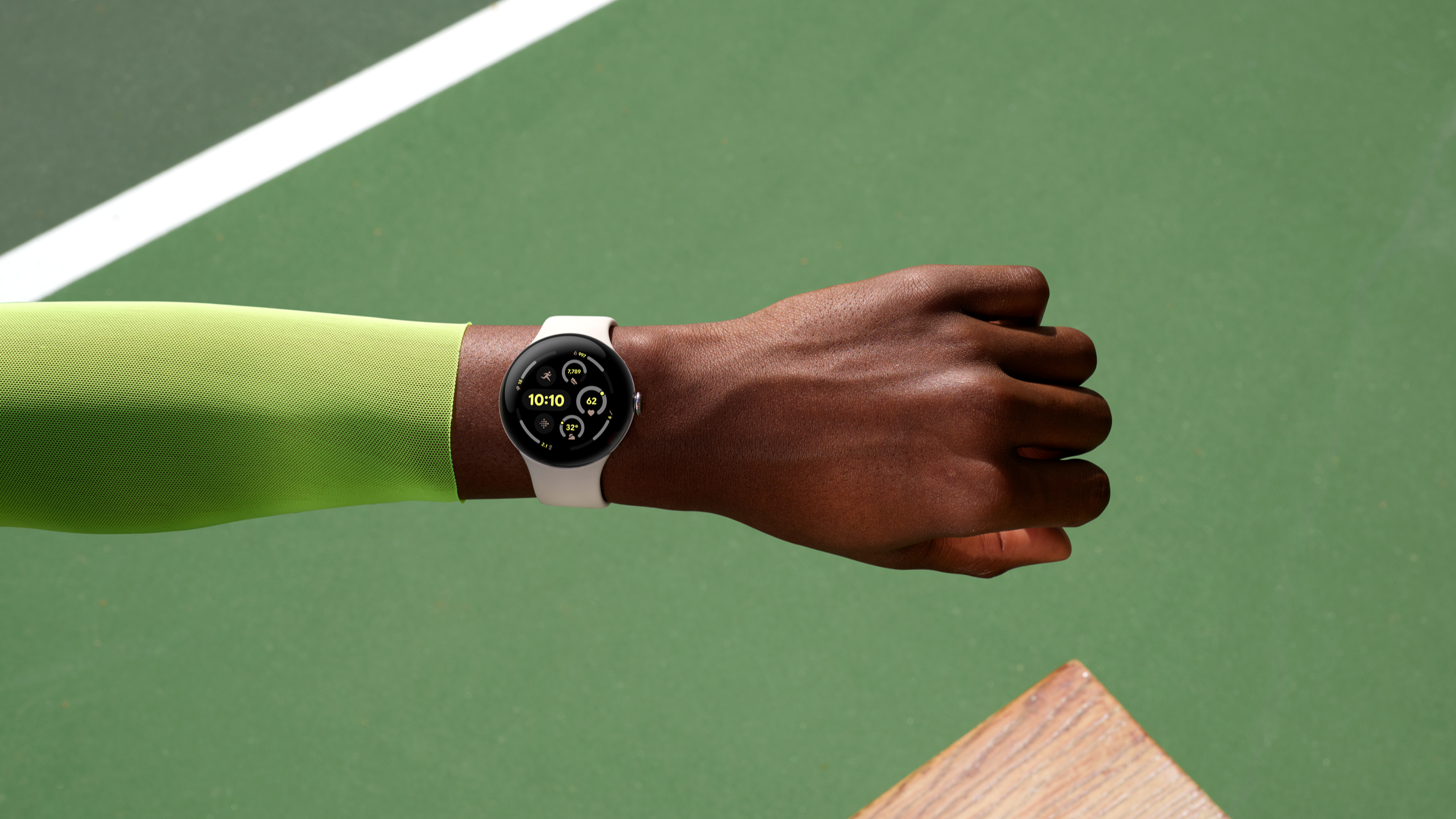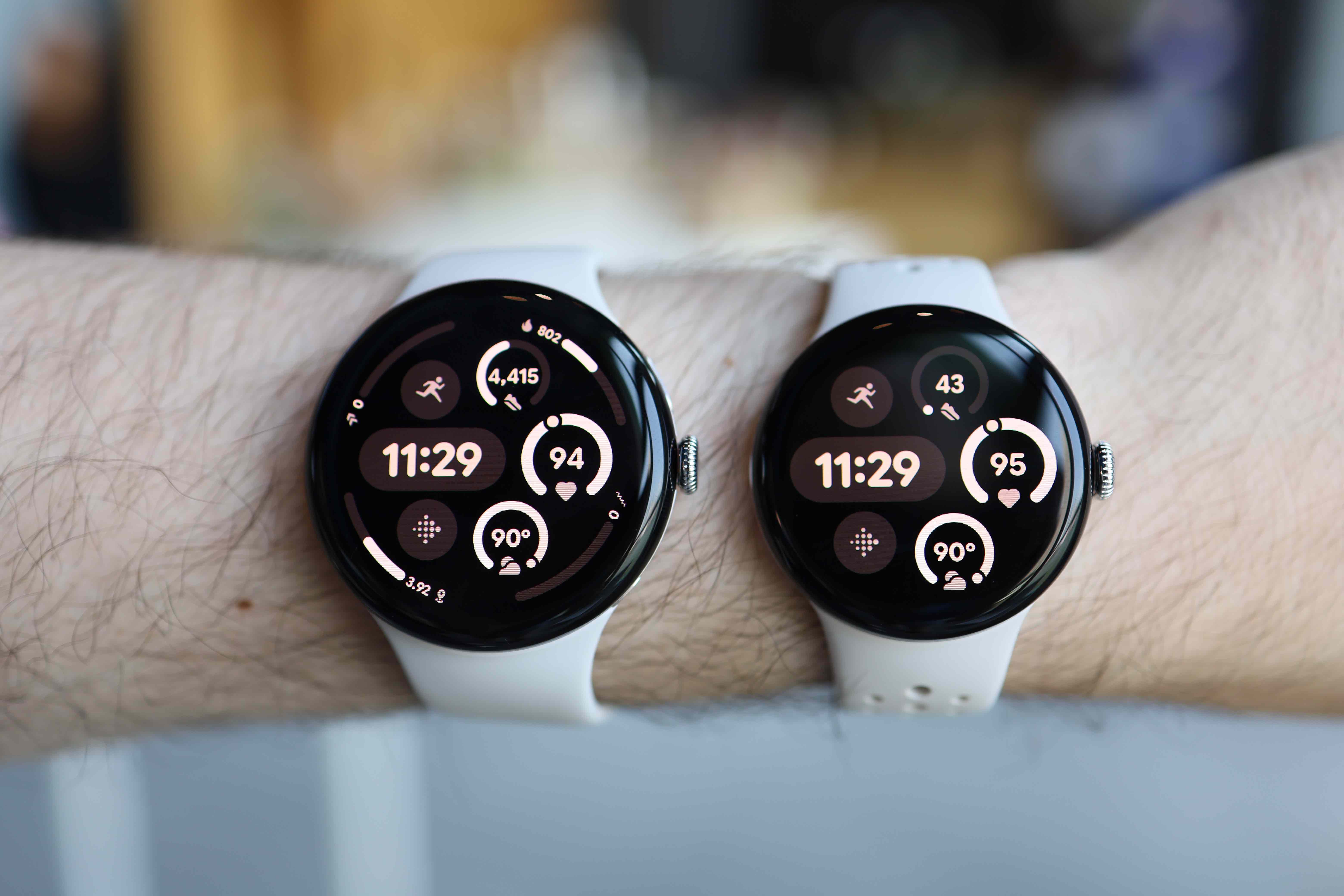Google Pixel Watch 3: Prices, new wellness tools, a bigger 45mm size and more
The next Google smartwatch is here

Google’s Made by Google Event has arrived, and the Google Pixel Watch 3 is set to be revealed later today. However, we already know loads about it. With a bigger size for the first time, a slew of new wellness tools, a brighter screen and advanced fitness smarts, the new Pixel Watch is shaping up to be the best yet.
You can read our hands-on review of the Google Pixel Watch 3 here for our first impressions, and check out our Made by Google 2024 live blog here.
However, below is everything you need to know right now about the Google Pixel Watch 3. Let's dive in!
Cut to the chase

- What is it? Two new Pixel Watch 3 models from Google, a 41mm and the 45mm.
- When is it out? Available to pre-order now.
- How much does it cost? Starting from $399 in the US and £349 in the UK, with Australia pricing TBC.
Google Pixel Watch 3: Price and release date

The Pixel Watch 3 is available to pre-order now on the Google store. The 41mm Pixel Watch 3 with Bluetooth and Wi-Fi is priced at $349/ £349, while cellular connectivity, so you can access the internet without a phone, costs $449/ £449.
The 45mm Pixel Watch 3 XL will start at $399/ £399 and jump to $499/ £499 for cellular connectivity.
UPDATE: Australia pricing has been confirmed, with AU$579 for the 41mm with Wi-Fi only, AU$749 for the 41mm LTE, AU$669 for the 45mm with Wi-Fi only, and AU$839 for a 45mm with LTE.,
Google Pixel Watch 3: Specifications
| Component | Google Pixel Watch 3 |
| Price | From $399 / £349 / AU$TBC |
| Dimensions | 41 x 41 x 12.3 (mm) / 45 x 45 x 12.3 (mm) |
| Weight | 31g / 37g without straps |
| Caze/bezel | Recycled aluminum |
| Display | 320ppi always-on display AMOLED |
| GPS | GPS, Galileo, GLONASS, Beidou, QZSS |
| Battery life | 36 hours battery saver, 24 hours always-on display |
| Connection | Bluetooth, Wi-Fi, LTE |
| Water resistance | WR50, IP68 |
Google Pixel Watch 3: Design and screen

The 41mm and 45mm both arrive in a Matte Black color / Obsidian band and Polished Silver Aluminium / Porcelain band. The 45 mm watch is also available in Polished Hazel Aluminium color / Hazel band, and the 41 mm model offers the option of a Champagne Gold Aluminium / Hazel band.
Sign up for breaking news, reviews, opinion, top tech deals, and more.
The Pixel Watch 3 is similar to the Google Pixel Watch 2 in many ways. It’s still got Google’s distinctive teardrop rounded screen. It still comes in a 41mm size. It still runs Wear OS. But there are plenty of changes this year too, on all of the above fronts: the screen is brighter than ever (reaching up to 2,000 nits), a larger 45mm Pixel Watch 3 is now available, dubbed the Watch 3 XL, and the Pixel Watch 3 comes equipped with Wear OS 5.
The screen in particular is worth noting: Google says the Pixel Watch 3 has its “most advanced Actua displays that are twice as bright as before, with a peak brightness of 2,000 nits” that can also go as low as 1 nit.
The Pixel Watch 3 41mm has 10% more screen real estate than the Pixel Watch 2 due to its thinner bezels, while the 45mm has 40% more screen than last year’s model. Wow! Both also have 60Hz refresh rates, and are said to be “more power efficient” than last year’s model.
Otherwise, the design remains very similar to the Pixel Watch 2, with the single crown button and teardrop display. The Pixel Watch 3 XL has a 35% bigger battery to account for the larger screen, although both watches still only last 24 hours with the always-on display enabled. A Battery Saver mode extends life to 36 hours.
Google Pixel Watch 3: Features

Alongside all the fantastic capabilities and third-party apps you’re able to bring to bear with Wear OS, the Pixel Watch 3 has a bevvy of new and improved features.
First up is a new suite of health tools. It’s supposed to be great for runners, using machine learning to track metrics such as your vertical oscillation (how much you bounce up and down on a run) cadence and stride length, presented in a new-to-Fitbit running dashboard.
Fitbit’s Daily Readiness Score has been improved with a new algorithm, which tracks your body’s key biometrics and condenses it into a single score to tell you how much energy you have to spend that day. A low Daily Readiness Score means now may not be the time to go on that long run, while a high one may mean you’re ready to go.
The Google Pixel Watch 3 is also now packing a Fitbit Morning Brief, similar to the Morning Report on the best Garmin watches, and two new metrics: Cardio Load, which tracks your heart rate trends during training, and Target Load, which can help you set training goals. The new running dashboard can help you plan workouts, setting workout segments like intervals and warm-ups on your phone and sending it to your watch. Neat.
A new feature is Loss of Pulse Detection, which detects when your heart suddenly stops beating, and can automatically place a call to emergency services or share an automated message with your location.
Otherwise, the Pixel Watch 3 connects to multiple GPS network for better fitness tracking accuracy, uses the best Fitbit health and fitness tools (especially with the included six-month free trial of Fitbit Premium, one of our best fitness apps) and can continue to link with your Google Pixel phone for call screening, notifications, messaging, camera control, and all the usual smarts. It can be used a remote for your Google TV, and interface with the Google Nest hub. It's genuinely embedded in the ecosystem.
You might also like

Matt is TechRadar's expert on all things fitness, wellness and wearable tech.
A former staffer at Men's Health, he holds a Master's Degree in journalism from Cardiff and has written for brands like Runner's World, Women's Health, Men's Fitness, LiveScience and Fit&Well on everything fitness tech, exercise, nutrition and mental wellbeing.
Matt's a keen runner, ex-kickboxer, not averse to the odd yoga flow, and insists everyone should stretch every morning. When he’s not training or writing about health and fitness, he can be found reading doorstop-thick fantasy books with lots of fictional maps in them.
- David NieldFreelance Contributor